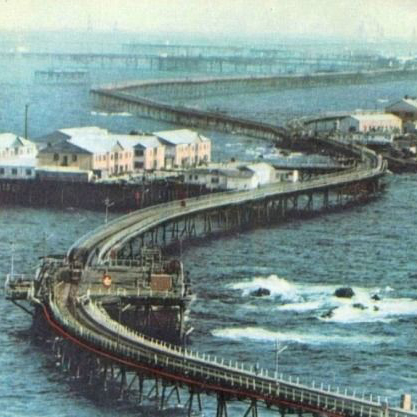ON THE INDUSTRIAL HISTORY OF AZERBAIJAN
The industrial history of Azerbaijan is largely a story of petroleum. Although the earth beneath this nation also holds iron, copper and other ores, their exploitation has remained secondary. Until the arrival of the oil boom, the countryside was dominated by agriculture.
Petroleum and petroleum products have been used for thousands of years: in prehistoric times, bitumen was used to seal boats, and the Babylonians used asphalt to pave their streets. Medieval historians were the first to report natural oil springs on the Abşeron Peninsula on the Caspian Sea. Marco Polo wrote of oil from this region that was transported on camel-back along the Silk Road. It was used as a medicine, as lamp fuel and for Greek Fire, a weapon reminiscent of modern flamethrowers. But a boom did not take off until the mid-19th century, when kerosene lamps became the preferred form of domestic and street lighting.
Under the Czars, rulers of the major part of today’s Azerbaijan since 1813, the first successful oil well was drilled on the Abşeron Peninsula in 1846. This was followed by refineries for products such as kerosene and paraffin oil. When the Russian government began selling off land on Abşeron and granting drilling concessions in 1872, oil derricks began sprouting like mushrooms. Foreign investors from Europe’s booming industrial nations rushed into the country, and Baku saw the emergence of the legendary “Black City”, a cluster of oil refining operations. On the “white” side of the booming metropolis, Robert and Ludvig Nobel erected the imposing Villa Petrolea, which today houses an oil industry museum. Like their better-known brother Alfred, the Nobels were both entrepreneurs and inventors: they founded their company, Branobel, in 1878, developed steel oil tanks and laid the first pipelines from the oil wells to their refinery. To accelerate transport to the heart of the Russian Empire, they commissioned the first ocean-going oil tanker to carry the black gold across the Caspian Sea to the Volga.
Branobel soon became one of the world’s largest oil companies. But in 1883, Alfons Rothschild built a rival transport route, financing a rail line from Baku to the Georgian Black Sea port of Batumi, from whence the oil was shipped to his refinery on the Mediterranean. At that time, Russia and the USA together accounted for close to 100% of the world’s crude oil production. Baku grew to become a multi-ethnic metropolis with European flair, while the economy of the rest of the country stagnated. In spite of such innovations as the rotary drill, oil production on the Abşeron peninsula started to decline from the turn of the 20th century.
The first Azerbaijani nation, founded in 1918, was occupied two years later by the Red Army. The Soviet Union immediately stepped up oil production. Foreign corporations were granted concessions, and new fields were opened up. The Polytechnic Institute, today the State Oil and Gas University, was founded in 1920 as the first institute for the training of petroleum engineers. Production of natural gas began in 1928. The first offshore drilling in the Caspian Sea was undertaken in 1947.
The industrial region of Kirovabad (today Gǝncǝ), where an aluminium smelter, chemical and textile plants were established before World War II, contributed to economic diversification. The construction of a large hydroelectric plant at Mingǝçevir Reservoir in 1948 led to the founding of the city of the same name, which became a centre of light industry, primarily the production of construction materials and textiles. North of Baku, with its innumerable oil refineries, the town of Sumqayıt was founded in 1949. This became a major centre for petrochemical processing facilities as well as energy-intensive operations such as an aluminium smelter, a tube factory and a rolling mill.
The importance of Azerbaijani oil started to decline in the 1950s as new fields were discovered in the Volga-Ural region and later in Siberia, but oil and gas remained the country’s most important products economically. Consequently, the breakup of the Soviet Union plunged Azerbaijan into a series of disputes with other former Soviet republics that remain dependent on subsidised energy supplies from the socialist economic network.
Azerbaijan was a union republic of the 'Union of Soviet Socialist Republics (USSR)', which was dissoluted in 1991.
Therefore, for completeness, also read our articles on the industrial history of the other former soviet republics
Armenia
Belarus
Estonia
Georgia
Kazakhstan
Latvia
Lithuania
Moldova
Russia
Ukraine


